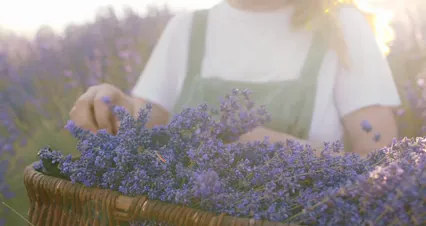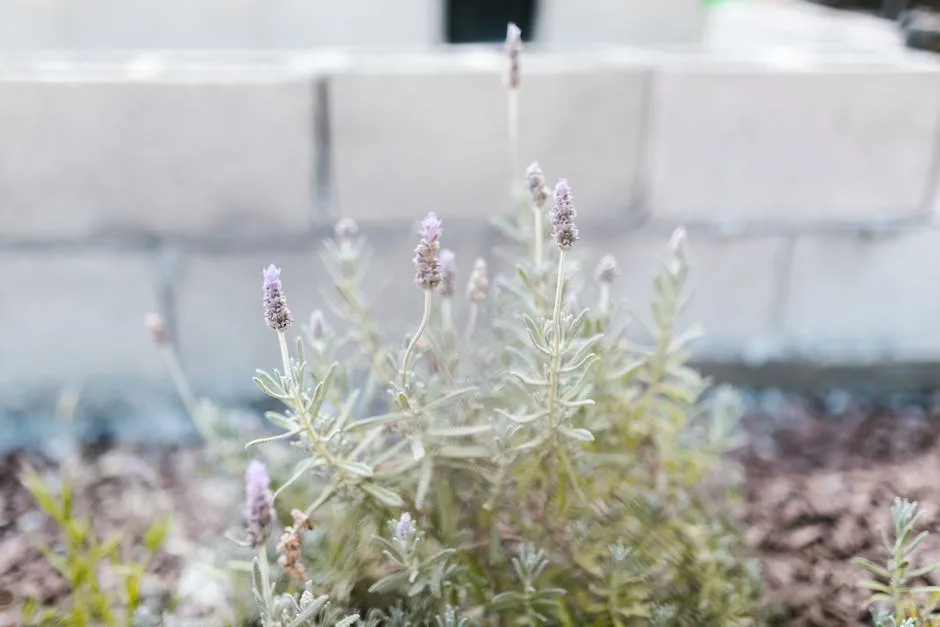

Lavender Flowers: A Comprehensive Guide to Growing and Using This Fragrant Herb
Introduction
Lavender flowers are beloved for their beauty and versatility. Their vibrant colors and delightful fragrance make them a favorite in gardens. You can use lavender not only for visual appeal but also for cooking and aromatherapy. This fragrant herb truly enhances any space, providing both charm and utility.
Speaking of enhancing spaces, have you tried using Lavender Essential Oil? It’s perfect for creating a calming atmosphere in any room, helping you unwind after a long day. Plus, it’s an essential addition to your aromatherapy toolkit!
Summary and Overview
Lavender has a rich history, dating back thousands of years. Ancient Romans used it in baths for relaxation and healing. Today, its popularity continues to grow, thanks to its many benefits. There are several lavender varieties, each with unique traits. English lavender, known for its culinary uses, thrives in cooler climates. French lavender offers a robust scent, while Spanish lavender’s distinctive blooms catch the eye.

Growing lavender brings numerous benefits. It attracts pollinators like bees and butterflies to your garden. Additionally, lavender has culinary and medicinal applications. The good news? Lavender is easy to care for. With minimal maintenance, you can enjoy its beauty and fragrance for years. Whether you want to create a stunning garden or use it in recipes, lavender is a fantastic choice.
To get started with your lavender adventure, consider acquiring some Culinary Lavender. It’s not only delightful in dishes but also a fantastic conversation starter at your next dinner party!
Understanding Lavender
History of Lavender
Lavender’s history is fascinating and varied. Ancient Egyptians used it for mummification and in perfumes. The Greeks believed it had healing powers and used it in their baths. In the Middle Ages, lavender was a staple in herbal remedies and was often used to ward off illness.
Today, lavender remains incredibly popular in gardens worldwide. Statistics show that lavender ranks among the top plants for home gardens, thanks to its resilience and beauty. As more people discover its benefits, the demand for lavender continues to rise. Isn’t it amazing how a simple flower can have such a significant impact across cultures and centuries?

Types of Lavender
Lavender comes in various species, each with unique traits. Understanding these lavender varieties helps you choose the right one for your garden.
English Lavender (L. angustifolia): This classic variety thrives in cooler climates. It boasts a sweet fragrance and is perfect for culinary uses. English lavender blooms from June to August, reaching heights of 2 to 3 feet. Its purple flowers are often used in cooking and teas.
French Lavender (L. dentata): Known for its compact flower heads and fringed leaves, French lavender adds a unique touch to any garden. It prefers warmer climates and flowers from early summer to fall. Expect it to grow up to 3 feet tall with light purple blooms.
Spanish Lavender (L. stoechas): This striking species features pineapple-shaped blooms topped with colorful bracts. Spanish lavender thrives in hot, dry conditions, flourishing from mid to late summer. It typically reaches heights of 18 to 24 inches and has aromatic leaves.
Planting Lavender
Ideal Growing Conditions
To successfully grow lavender, start with the right soil. Lavender thrives in sandy, well-draining soil. It doesn’t like rich, nutrient-heavy soil, so avoid heavy amendments. Aim for a pH level between 6.5 and 7.5 for optimal growth.
Sunlight is crucial. Lavender needs at least six hours of direct sunlight daily. This exposure helps produce those lovely, fragrant blooms. When it comes to spacing, plant your lavender 2 to 3 feet apart. This allows for proper air circulation and growth.

Timing matters too. The best times to plant lavender are in spring or fall. Spring planting lets the roots establish before summer heat. Fall planting allows the plant to settle in before winter.
Don’t forget to equip yourself with reliable tools! A good Gardening Gloves can save your hands from scratches and dirt while you’re planting and caring for your lavender.
Step-by-Step Planting Guide
1. Prepare the Soil: Loosen the soil to improve drainage. Mix in some gravel if necessary.
2. Planting Technique: Dig a hole twice the width of the root ball. Place the plant in the hole, ensuring the crown is level with the soil surface.
3. Watering After Planting: Water the newly planted lavender lightly. Be careful not to overwater; lavender prefers to dry out between waterings.
Statistics show that lavender has a high success rate when planted correctly. With proper care, many gardeners enjoy a flourishing lavender garden for years to come.

Caring for Lavender
Watering and Fertilizing
Watering lavender correctly is vital for its health. Newly planted lavender needs regular watering. During the first few weeks, water deeply once a week. After that, reduce watering. Established plants prefer drying out between waterings. If your area experiences heavy rainfall, you may not need to water at all.
Lavender thrives in poor soil, so fertilizing is often unnecessary. In fact, too much fertilizer can harm the plant. If you feel your lavender needs a boost, use a low-nitrogen fertilizer. Apply it sparingly in early spring. Always follow the package instructions to avoid over-fertilization. Remember, less is more when it comes to lavender care.

For those looking to take their lavender care to the next level, consider using an organic fertilizer. Check out this Organic Fertilizer to give your plants the nutrients they need without the harsh chemicals.
Pruning Techniques
Pruning is essential for healthy lavender plants. The best time to prune is in early spring before new growth begins. You can also prune after the first bloom in late spring. This promotes bushy growth and vibrant flowers.
When pruning, cut back about one-third of the plant. Focus on removing dead or woody stems. This helps prevent leggy growth and keeps the plant looking tidy. Regular pruning encourages better airflow, reducing the risk of disease. Make sure to use clean, sharp tools to avoid damaging the plant.
Keeping your lavender well-pruned not only enhances its appearance but also improves its overall health. For more information on effective pruning methods, check out this guide on pruning techniques for fruit trees and shrubs.

Common Problems and Solutions
Pests and Diseases
Lavender plants can face several pests and diseases. Common pests include aphids and spider mites. These tiny insects can weaken the plant and stunt its growth. To prevent infestations, regularly check your plants. If you find pests, use insecticidal soap or neem oil for treatment.
Diseases like root rot can also pose a problem, especially if the soil is too wet. Ensure your lavender has excellent drainage to avoid this issue. If root rot occurs, remove the affected plant and improve the soil conditions before replanting.
By staying vigilant and following these lavender care tips, you can enjoy healthy and thriving plants in your garden!

Uses for Lavender
Culinary Uses
Lavender isn’t just a pretty flower; it’s also a delightful ingredient in many recipes. Cooking with lavender adds a unique flavor that can elevate your dishes. Its sweet, floral notes work well in both savory and sweet recipes.
For a delicious dessert, try making lavender-infused shortbread cookies. Simply add dried lavender buds into your cookie dough for a fragrant twist. Another popular option is lavender lemonade. Infuse simple syrup with lavender for a refreshing drink perfect for warm days.

You can even use culinary lavender in savory dishes. For example, it pairs beautifully with roasted chicken or grilled vegetables. The key is to use culinary-grade lavender, which has a milder flavor than ornamental varieties.
Looking for more ideas? Consider adding lavender to your favorite cupcake recipe or using it in herbal teas. The possibilities are endless! Cooking with lavender not only introduces a new flavor but also impresses your guests with your creativity.
And if you want to dive deeper into the culinary world of lavender, check out this Lavender Cookbook for more delicious recipes!
Medicinal and Aromatherapy Uses
Lavender is well-known for its calming effects, making it a favorite in aromatherapy. Many people use lavender essential oil to promote relaxation and reduce anxiety. Its soothing scent can help create a peaceful environment, perfect for winding down after a long day.
Statistics reveal that lavender oil production has surged in recent years, reflecting its growing popularity. This oil is extracted from the flowers and used in various products, from candles to skincare.

In addition to its calming properties, lavender may aid in sleep. Many people place lavender sachets under their pillows or use lavender oil in diffusers. This simple practice can enhance sleep quality and help with insomnia.
The versatility of lavender in medicinal and aromatherapy uses makes it a valuable addition to any home. Whether you’re looking to unwind or improve your sleep, this fragrant herb can be a wonderful solution.
Speaking of sleep, have you tried using Sleep Masks? They block out light and can help you achieve that much-needed rest, especially when paired with the soothing aroma of lavender.
Designing with Lavender
Lavender brings beauty and charm to any garden. Its vibrant purple hues and delightful fragrance make it a favorite for landscaping. You can use lavender to create stunning borders or hedges, adding both color and scent to your outdoor spaces. Imagine walking along a path lined with lavender, the gentle breeze carrying its soothing aroma.

Consider companion planting with lavender to maximize its benefits. Pair it with plants like roses or salvia, which thrive in similar conditions. Lavender can deter pests, protecting its companions while enhancing your garden’s overall appeal. This combination not only looks great but also promotes a healthier ecosystem. For more on this topic, refer to our article on Companion planting strategies for increased yield.
Companion planting with lavender can enhance your garden’s health and appearance. Discover effective strategies in Companion planting strategies for increased yield.
When designing with lavender, think about varying heights and colors. Mix different lavender species for a dynamic look. For instance, place English lavender in the front and taller varieties like French lavender behind it. This layered effect creates depth and interest in your garden design. With thoughtful planning, lavender can transform your outdoor space into a fragrant haven.

FAQs
What are the best growing conditions for lavender?
Lavender thrives in well-draining, sandy soil. It prefers a pH level between 6.5 and 7.5. Sunlight is crucial; ensure your lavender gets at least six hours of direct sun each day.
Is lavender a perennial plant?
Yes, lavender is a perennial herb. It returns year after year in suitable climates. However, hardiness varies by species, so choose the right type for your zone.
How do I preserve lavender flowers?
To preserve lavender, cut the flowers when buds start to open. Hang them upside down in a cool, dry place. Once dried, store them in an airtight container away from sunlight.
Can lavender be grown indoors?
Yes, lavender can grow indoors! Ensure it receives plenty of sunlight, ideally 6-8 hours daily. A well-draining potting mix is essential, and avoid overwatering to prevent root rot.
What are some common uses for lavender oil?
Lavender oil is popular for its calming effects. It can be used in aromatherapy, skincare, and even as a natural sleep aid. Many people enjoy its soothing scent in candles and diffusers.
And if you’re keen on diving into the world of lavender crafts, consider adding Lavender Sachets to your home. They make a lovely gift and keep your space smelling fresh!
Please let us know what you think about our content by leaving a comment down below!
Thank you for reading till here 🙂
All images from Pexels



